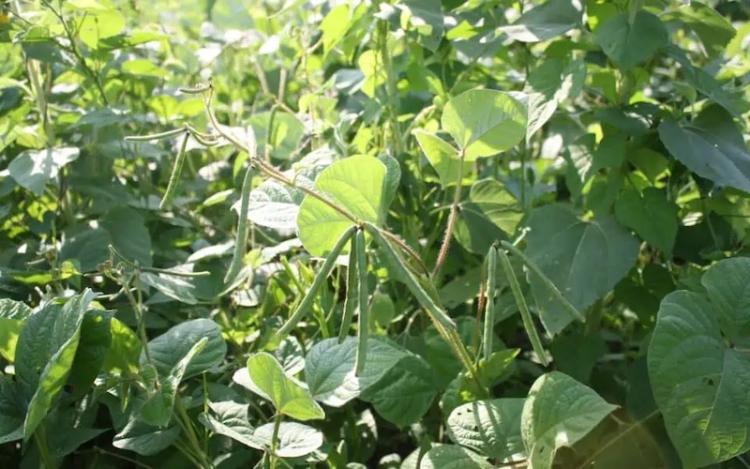What is your goal when planting forage for your whitetail herd? There are numerous products on the market that will produce some of the most delectable, nutritious forage possible for deer, but the same plants also produce fruit, like beans, peas, grains, etc. There are many plants that I plant solely for the leaf forage, even though they could also produce fruit. And just so you know, in this case “fruit” is referring to a bean, pea or cob, even though most people think of fruit as apricots, apples, bananas, and grapes. Things like bean pods, corn grains, tomatoes, cucumbers, and (in their shells) acorns and almonds, are all technically fruits.
Concerning feeding your whitetails, there are often more nutritional benefits, greater tonnage (yield), and better palatability in the plant’s leaves than their fruit. In fact, many of these plants are crossbred to produce specific strains that concentrate mainly on leaf-forage output.
I’ll use soybeans as an example, people most often plant them during the spring or early summer because that’s when farmers, who ARE concerned about the fruit output, will be planting them. However, when planting beans and peas and other annual legumes for whitetail forage they can be planted anytime during the growing season. Some of the plants can pump out much more forage after they become a few weeks old, but some are also much more palatable and attractive in their early stages of growth.
I believe we named our “Spring Protein Peas” incorrectly. They should just be called Protein Peas because they can be planted anytime during the growing season. On top of that, you could plant Winter Peas in the spring, or soybeans in August or September. If you are trying to get beans or peas to maturity, then you do want to plant them during their traditional time to get the fruit through to maturity. However, my point is, if you’re planting for the forage they can really be sown anytime you have adequate topsoil moisture and temperatures conducive to germination.
Obviously growing conditions come into play, you wouldn’t want to plant anything during a drought in July. However, if you have good moisture in July or are expecting a rain event, they can be planted. We’re planting them for their green leaf value, not for the fruit. Many will plant these crops during the spring and early summer to take advantage of banked soil moisture. If you plant them during the spring and early summer and are hoping to get a good crop of peas or beans, it doesn’t mean that your deer won’t also eat the leaves…and you still have the bonus of the fruit still on the stalk after they mature.
In addition to planting for either forage or fruit, annual legumes can also be planted as a soil amendment or as companions to other plants. The nitrogen these plants produce will be used by subsequent plantings, or it is loved by companion plants like brassicas or cereal grains. I typically plant my beans for the forage. The leaves from these annual legumes are like protein-rich candy to whitetails. If I happen to get a yield of beans out of the deal, then that’s a bonus.
To sum it up, plant your beans or peas when you please…if you aren’t worried about the actual bean production and only planting them for the leaf forage. However, if you are planting them for bean/pea production, then you should plant them when they are traditionally planted in your area.
BY:TODD AMENRUD









